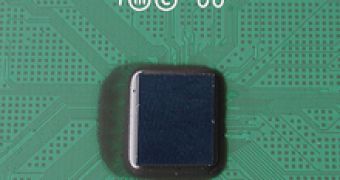In the middle of the African desert, among the Moroccan dunes of Mezouga, Intel decided to present to the French press the strategies for the near future regarding the development and marketing of the processors. After launching at the beginning of this week the dual-core processors and after long debates about Moore's law which is still standing even after 40 years, the company began to talk about a new perspective on the technologies regarding the manufacturing process.
After a brief mentioning of the first silicon processor, Intel emphasized its advantages on the production of advanced processing solutions. Having 5 factories spread all over the world and the possibility to manufacture wafers of 300 mm, Intel wants to push the manufacturing process to a whole new level: the company targets the implementation of the High-K technology and migrating until 2007 to the 45 nanometer graving solution. The secret to this is a grid isolator whose role is to prevent the electron leakage. In the same time, Intel will start using metallic electrodes, and starting with 2007 and until 2009, the producer estimated it will change the structure of the transistors by introducing the Tri-Gate solutions. Using an original non-planar arrangement of transistors, Intel hopes to optimize their properties. This optimization consists in the simplification and acceleration of electrons, avoiding in the same time the specific problems of electron leakage.
Normally, the electrons flow in a horizontal plan, but using these solutions will make them flow both on vertical and on horizontal direction. The cells of the Tri-Gate processors will communicate through nanomolecular connections, and once the nanotube type transistors appear, the diameter of each transistor will decrease under the 2 nanometer limit.
Intel is also planning the progressive transition to the EUV technology, or Extreme Ultraviolet Lithography, a solution that allows the graving of the processors at 32 nanometers and which will be available by 2009.

 14 DAY TRIAL //
14 DAY TRIAL //